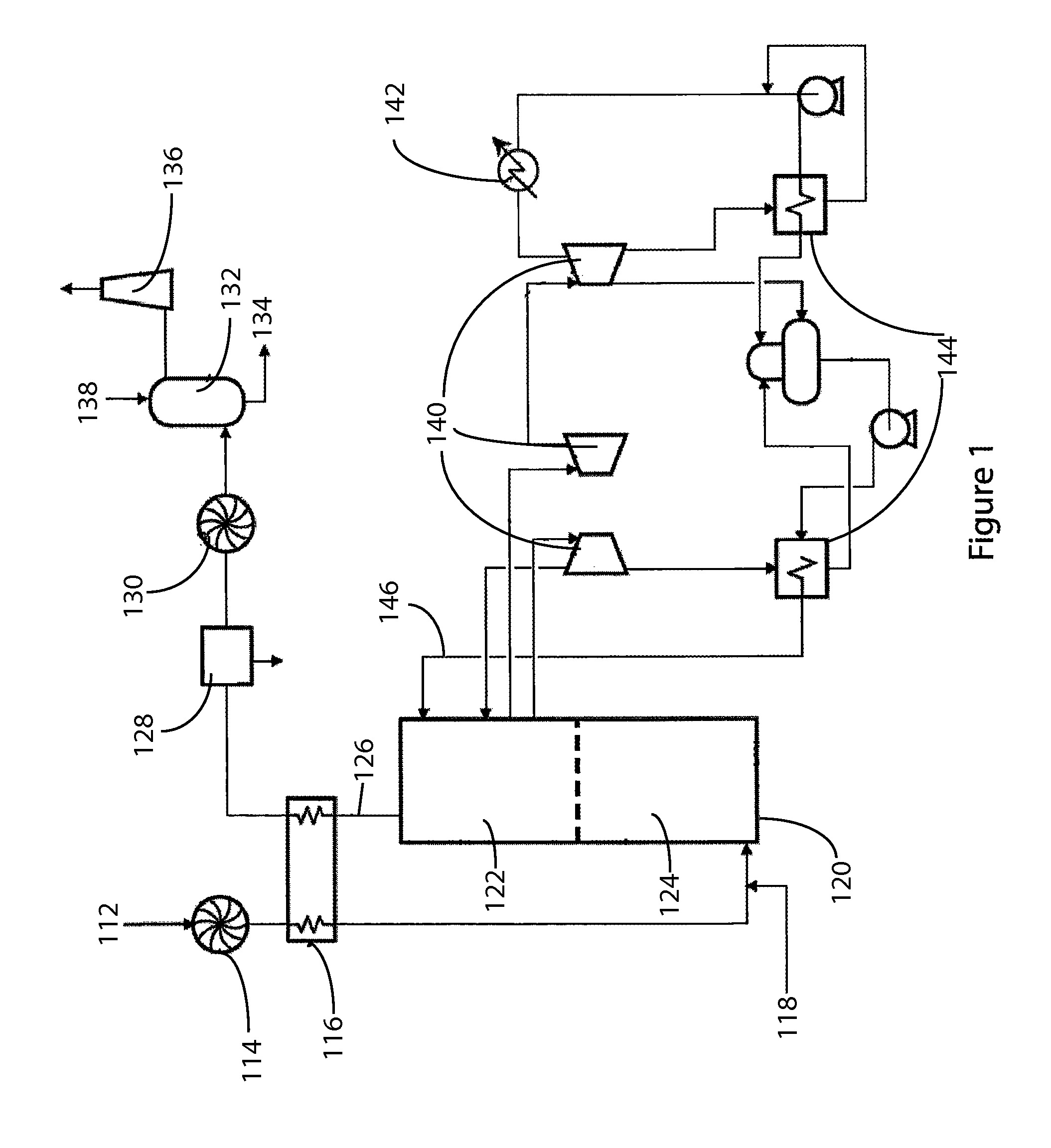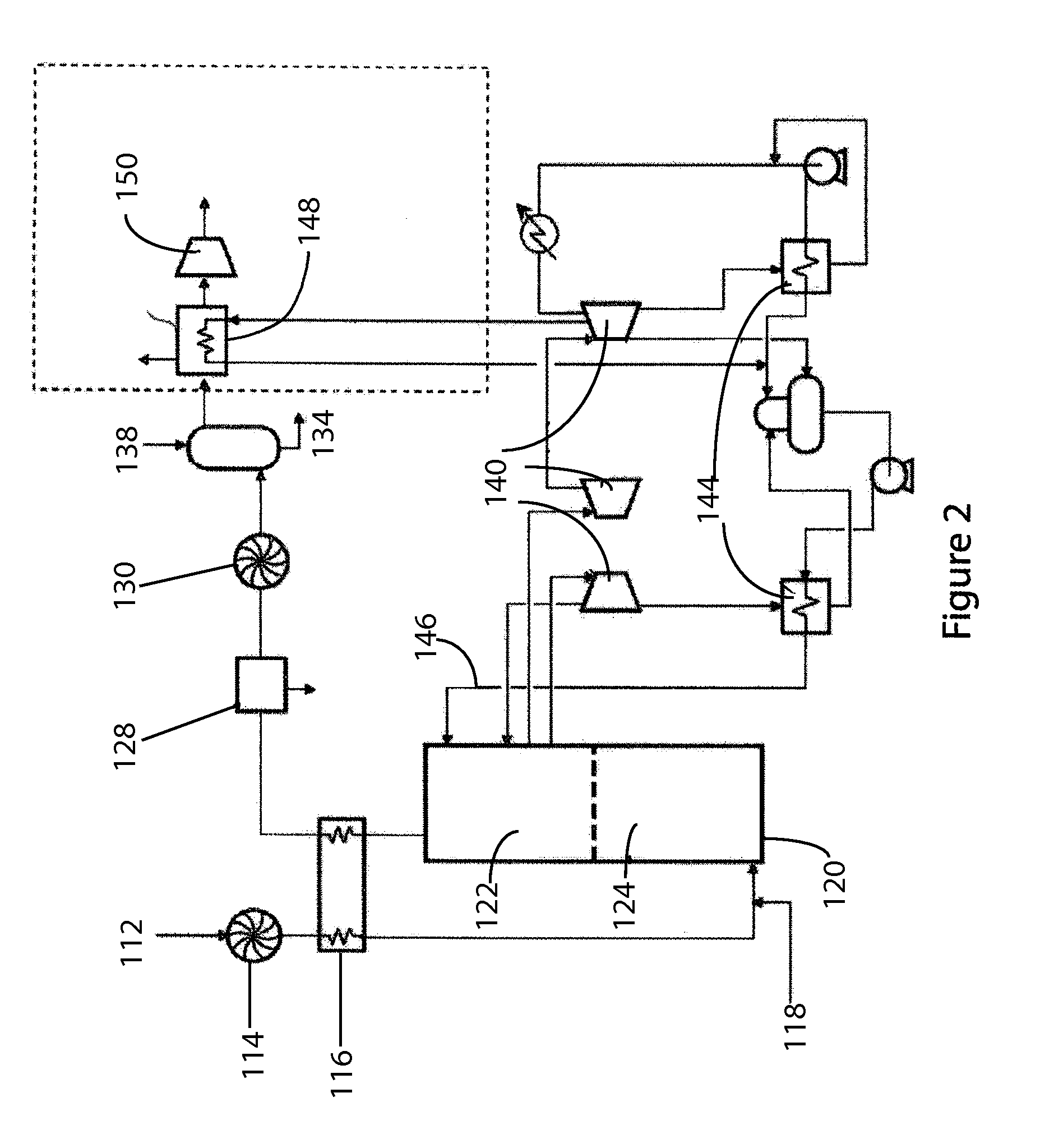Method for UV photolytic separation of pollutant gases from an emission stream
a technology of pollutant gas and photolysis separation, which is applied in the direction of separation process, liquid degasification, dispersed particle separation, etc., can solve the problems of reducing the overall thermal efficiency of the power plant from 39% to 29%, and energy-intensive cosub>2 /sub>from the amine solution
- Summary
- Abstract
- Description
- Claims
- Application Information
AI Technical Summary
Benefits of technology
Problems solved by technology
Method used
Image
Examples
Embodiment Construction
[0039]While the presently disclosed inventive concept(s) is susceptible of various modifications and alternative constructions, certain illustrated embodiments thereof have been shown in the drawings and will be described below in detail. It should be understood, however, that there is no intention to limit the inventive concept(s) to the specific form disclosed, but, on the contrary, the presently disclosed and claimed inventive concept(s) is to cover all modifications, alternative constructions, and equivalents falling within the spirit and scope of the inventive concept(s) as defined in the claims.
[0040]Prior Photolytic CO2 Separation from (MEA)2-CO2
[0041]The disclosed technology discusses separation of CO2 from scrubber of power plant emission streams as an example, but it is to be understood that this application of the technology is merely one example of possible applications, and is currently a preferred embodiment. Patent law requires that at least one preferred embodiment ...
PUM
| Property | Measurement | Unit |
|---|---|---|
| width | aaaaa | aaaaa |
| temperature | aaaaa | aaaaa |
| photon energy | aaaaa | aaaaa |
Abstract
Description
Claims
Application Information
 Login to View More
Login to View More - R&D
- Intellectual Property
- Life Sciences
- Materials
- Tech Scout
- Unparalleled Data Quality
- Higher Quality Content
- 60% Fewer Hallucinations
Browse by: Latest US Patents, China's latest patents, Technical Efficacy Thesaurus, Application Domain, Technology Topic, Popular Technical Reports.
© 2025 PatSnap. All rights reserved.Legal|Privacy policy|Modern Slavery Act Transparency Statement|Sitemap|About US| Contact US: help@patsnap.com



